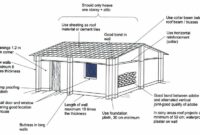Maintaining a beautiful and healthy garden involves regular care and attention, one of the most crucial tasks being the management of weeds – Treat Weeds.
Weeds can compete with your desired plants for nutrients, water, and sunlight, ultimately affecting the health and appearance of your garden.
Here’s a comprehensive guide on how to effectively treat weeds in your garden.
1. Understanding Weeds




Before diving into treatment methods, it’s important to understand what weeds are. Weeds are simply plants growing in the wrong place.
They are often hardy and fast-growing, which allows them to outcompete cultivated plants. Common garden weeds include dandelions, crabgrass, chickweed, and thistles.
Read also:
1. 49 Best Aesthetic Rectangular Planter With Greenary Ideas
2. 53 Best Rustic Outdoor Planter Ideas You’ll Love | Simple DIY
3. 43 Vintage Concrete Planter Ideas for Aesthetic View at Home
here’s a listing about 25 common garden weedsWeed Name Advantages Disadvantages Dandelion Edible leaves and flowers, attracts pollinators Deep taproot, difficult to remove Crabgrass Provides ground cover Spreads rapidly, competes with lawn grasses Chickweed Edible, good ground cover Spreads quickly, can smother other plants Thistle Attracts beneficial insects Sharp spines, aggressive spreader Bindweed Attractive flowers Aggressive growth, hard to eradicate Clover Fixes nitrogen in soil Can outcompete lawn grasses Plantain Edible leaves, medicinal uses Broad leaves can smother grass Pigweed Edible leaves Competes with crops Lamb’s Quarters Edible leaves, high in nutrients Rapid spread, competes with garden plants Quackgrass Erosion control Invasive, hard to remove due to rhizomes Purslane Edible, high in omega-3 fatty acids Spreads quickly, competes with other plants Ragweed None Causes allergies, aggressive spreader Creeping Charlie Ground cover, medicinal uses Invasive, hard to control Nutsedge Edible tubers Tough to eradicate, spreads quickly Japanese Knotweed Attractive flowers Highly invasive, difficult to control Mullein Medicinal uses Large, can outcompete desirable plants Wild Onion Edible Unpleasant odor, hard to eradicate Canada Thistle Attracts pollinators Deep roots, aggressive spreader Ground Ivy Ground cover, medicinal uses Spreads rapidly, hard to remove Spurge Attractive appearance Produces irritating sap, spreads quickly Foxtail None Spreads quickly, competes with lawn grasses Johnson Grass Erosion control Highly invasive, toxic to livestock Velvetleaf None Competes with crops Horseweed None Competes with crops, spreads rapidly Field Bindweed None Highly invasive, hard to control
2. Preventive Measures




The best way to deal with weeds is to prevent them from establishing in the first place. Here are some preventive measures:
- Mulching: Applying a thick layer of mulch around your plants can suppress weed growth by blocking sunlight. Organic mulches, like straw or wood chips, also improve soil health as they decompose.
- Ground Covers: Planting ground covers or densely planting your garden beds can shade the soil and prevent weeds from taking hold.
- Landscape Fabric: Laying down landscape fabric before planting can effectively block weeds. Make sure to cover it with mulch or soil to prevent degradation by sunlight.
- Regular Maintenance: Regularly inspecting your garden and removing weeds while they’re small can prevent them from spreading.




Read also:
1. 43 Grow Fresh Flavor: Inspiring Vegetable Garden Ideas for Everyone
2. 47 Front Yard Garden Ideas for Creating Calming and Serene Natural Environments
3. Backyard Ideas Without Fence | Home & Garden
3. Mechanical Control
Physical removal of weeds is an effective and environmentally friendly method. This includes:
- Hand Pulling: This is most effective for small gardens or raised beds. It’s best done when the soil is moist so the entire root system can be removed.
- Hoeing: Using a hoe can quickly remove weeds from larger areas. Hoeing is most effective when weeds are small and before they go to seed.
- Weed Torch: A weed torch uses propane to kill weeds with heat. This method is effective for driveways and sidewalks but should be used with caution around flammable materials.
read also:
1. How to Weed a Garden – Home & Garden Ideas [Inspira Building]
2. 101 Creative and Stunning Front Yard Corner Lot Landscaping Ideas
3. 69 No grass front yard ideas with Low Maintenance Design
4. Chemical Control
If preventive and mechanical methods are not sufficient, chemical controls may be necessary. Here are some options:
- Pre-emergent Herbicides: These prevent weed seeds from germinating. They are effective when applied early in the growing season.
- Post-emergent Herbicides: These are used to kill weeds that have already emerged. They can be selective (targeting specific weeds) or non-selective (killing all vegetation). Glyphosate is a common non-selective herbicide.
- Organic Herbicides: These include vinegar-based solutions or herbicides containing fatty acids. They are less harmful to the environment but may require multiple applications.

Pre and post – emergent Herbicides
Liquid Harvest Non Ionic Surfactant 16oz and Mesotione 8oz- Pre and Post Emergent Weed Killer for Lawn and Turf Grasses

Natural Herbicide
Pet’s Pal Natural Weed Killer | Pet Safe Spray | Ready-to-use Natural Herbicide | Environmentally Safe | Bee Safe | Glyphosate Free | Safe for Kids
5. Integrated Weed Management (IWM)
Combining various weed control methods can be more effective than relying on a single approach. Integrated Weed Management involves:
- Monitoring: Regularly inspecting your garden to identify and assess weed problems early.
- Using Multiple Methods: Combining preventive, mechanical, and chemical controls to manage weeds effectively.
- Adjusting Practices: Modifying your approach based on the success of different methods and the specific conditions of your garden.
Read also:
1. 32 Low Maintenance Landscaping Ideas around Trees
2. 57 Low-Maintenance, Low-Cost No Grass Front Yard Design Ideas
3. 149 Tropical Backyard Landscape Ideas: Creating Your Own Paradise
6. Safe Practices
When using any weed control method, it’s important to follow safe practices:
- Wear Protective Gear: When handling herbicides, wear gloves, long sleeves, and eye protection.
- Read Labels: Always follow the manufacturer’s instructions for application rates and safety precautions.
- Avoid Windy Days: Apply herbicides on calm days to prevent drift onto desirable plants.
- Dispose of Weeds Properly: Avoid composting weeds with seeds or persistent roots. Dispose of them in a way that prevents them from re-establishing.
Read also:
1. 21 Low Cost Backyard Makeover Ideas on a Budget
2. 53 Backyard Putting Green and Custom Backyard Ideas
3. 93 Backyard Remodel Ideas – Wood & Concrete Accent
Conclusion
Treating weeds in the garden requires a combination of prevention, mechanical control, and, when necessary, chemical methods.
By understanding the different types of weeds and employing a variety of control techniques, you can keep your garden healthy and beautiful.
Regular maintenance and an integrated approach will ensure that weeds remain under control, allowing your plants to thrive.






